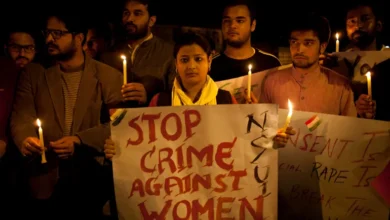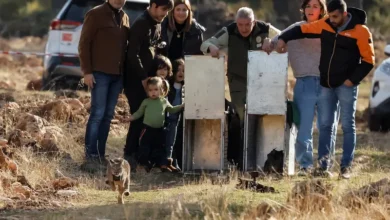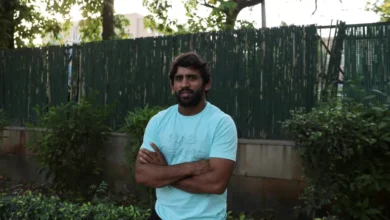What is life like in the shadow of solar farms?

Plans to turn land being used for the production of food into farms harvesting the power of the sun often see campaigns fought through the planning process.
For some these glimmering, undulating landscapes of panels are now as much a part of the countryside as the fields they inhabit, but for others, the feeling is they are totally at odds with it.
Heading out of the Leicestershire market town of Ashby-de-la-Zouch on almost any of its roads, once you pass a handful of entrances to housing estates of varying ages, you arrive in the National Forest countryside.
On a sunny spring morning, it is a glorious place to be.
But around Ashby these open spaces are not a green wedge, so much as a buffer of fields covered in panels harvesting green energy.
Walking along the roadside in Shellbrook, on the western edge of the town, the chirpy song of chiffchaffs, blackcaps and robins in the hedgerows now mixes with the buzz of kit working away inside the green metal boxes behind the chain link fencing beyond them.
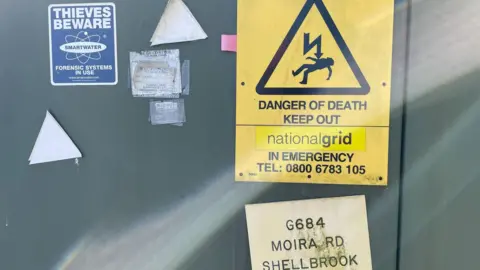
One homeowner nearby said they had not objected but were now living with the hum of the solar farm nearby, while one man living near to Ashby’s biggest collection of panels, who did not wish to be named, told me all solar farms “need a bomb putting under them”.
He fumed that having one on his doorstep had devalued his property, and that acres upon acres of “valuable farmland” were lost to the scheme.
These are arguments routinely put to planning officers and council committees the length and breadth of the country – that these renewable schemes lead to the loss of productive farmland, and come at a cost to the look of the landscape.
These battles are fought increasingly regularly, some are won by developers, and some are lost. But when the dust settles and one is built, what is it really like?
For more of the Ashby residents I spoke to, where the panels were mostly put in about a decade ago, there are drawbacks, despite most people having much less incendiary views on the solar farms next door.
But the overall consensus was – they do not really bother them.

John Gillespie, 41, said the solar panels a stone’s throw from his house were not flagged when he bought his home recently, and having them nearby had not affected him.
He said: “As the population grows, we need more energy. There’s a lot of empty fields, I don’t think it’s harming anyone.”
Shellbrook resident Liz Bark, 54, said: “When they built it we were concerned what it could look like, but it’s fine.
“When you walk around the wooded area you can hear it but it doesn’t bother us at home.
“It’s quite nice to see that the ground is still being used. The grass is still growing, the sheep are being fed.”

Sarah Pay, 70, of Ashby, has banks of panels just beyond her garden fence, but said: “We are sort of relieved because it’s not housing.
“What I can’t understand is why don’t put them on roofs. In France you see them on top of car parks and industrial units, they put them on all the unsightly things, they haven’t stuck them all over the countryside.
“We’re missing a trick here.”
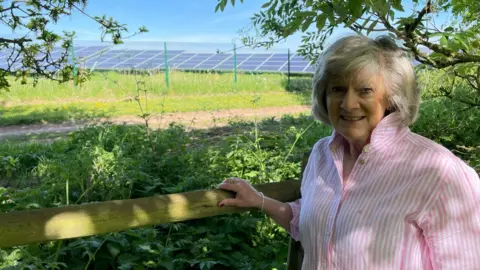
Her view was echoed by neighbour Kevin Holloway, 66, who said: “You’ve got all those warehouses at Castle Donington, not one has got solar panels on them.”
He added really it was up to the farmer what to do with their land.
“If they can’t make enough growing food, then they’re going to do something else,” he said.
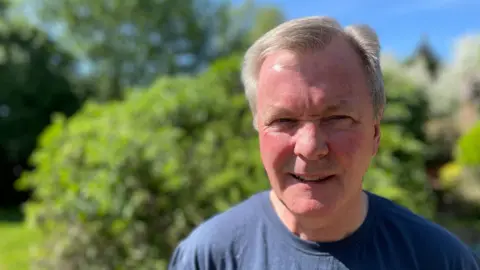
That was just what Ingles Hill Farm in Smisby did 10 years ago.
Farmer Maurice Stanley, now 79, was at retirement age and was made an offer by a renewables firm.
He said: “You can use it for agricultural use, to graze sheep on it for instance, but I chose not to – I’ve got enough to keep me going at my age.
“I could have put more in but I wanted to keep the view from the road as arable land, I didn’t want panels right up to the road.
“There were no objections, and I haven’t had any since.”
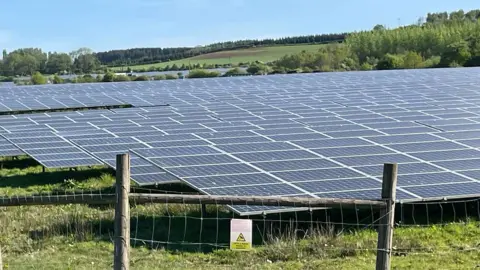
Mr Stanley said intervening years have backed his decision.
He said: “I’m not a Green but I do think we’ve got to get as much green energy as we can, for obvious reasons.
“There’s no doubt about it, global warming is a fact. We’ve just gone through two months without an inch of rain and as a result crops are really suffering – before that it didn’t stop raining for 18 months.
“With climate change, we need to do all we can.
“Solar panels are an excellent way of producing energy, and it provides a better income than farming, otherwise we wouldn’t do it.”
‘Stable revenue stream’
The BBC approached firms behind some of Ashby’s solar farms about their impact on the town.
Mike Rutgers, managing director UK development at Low Carbon, which operates the largest of the solar sites in Ashby, said: “We find communities are more and more accepting of thoughtfully conceived solar development as concerns over climate change grow.”
He said the farms not only provided “affordable clean energy”, they helped to keep farms viable by providing “a stable revenue stream”.
He said: “We believe that the dual missions of energy security and food security are complementary.”
He added: “We recognise the important role roof-mounted solar can play in helping to reduce our reliance on fossil fuels and cut energy bills.
“However, without utility-solar projects we will not be able to meet the UK’s target of trebling solar capacity by 2030.”
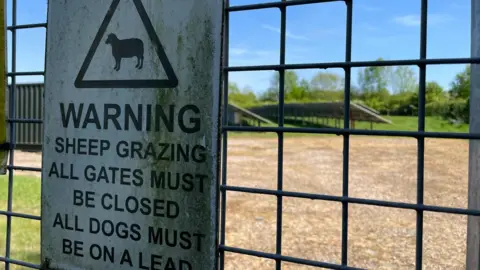
Hadstone Energy, the firm behind the solar site near Lount, to the east of Ashby, said “lots of thought” was put into making its site “acceptable to the local community”.
A larger farm had been planned but “a rare lizard habitat” was nearby so plans were scaled down.
Director James Rowe said: “We had a public consultation event in Ashby, which was very pleasant and from which no issues arose. I don’t think there were any written objections and I went to the council meeting, in which it was dealt with very quickly and without objections.”
The government’s Department for Energy Security and Net Zero told the BBC that solar was “at the heart” of work to generate green energy.
A spokesperson said: “As of September last year, solar farms covered around 0.1% of the total land area of the UK, while bringing huge benefits for the British public and our energy security.
“Projects are subject to a rigorous planning process, in which the views and interests of the local community and impacts on the local environment, including any impact on amenities, landscapes and land use, are considered.”
While solar farms on fields are not set to disappear – especially those already built with lifetimes in their decades – the future of solar may be starting to move up towards the rooftops of the UK.
The Ministry of Housing, Communities and Local Government is set to publish new guidance on homebuilding “later this year”, it said, which would “maximise the installation of solar panels on new homes”.
